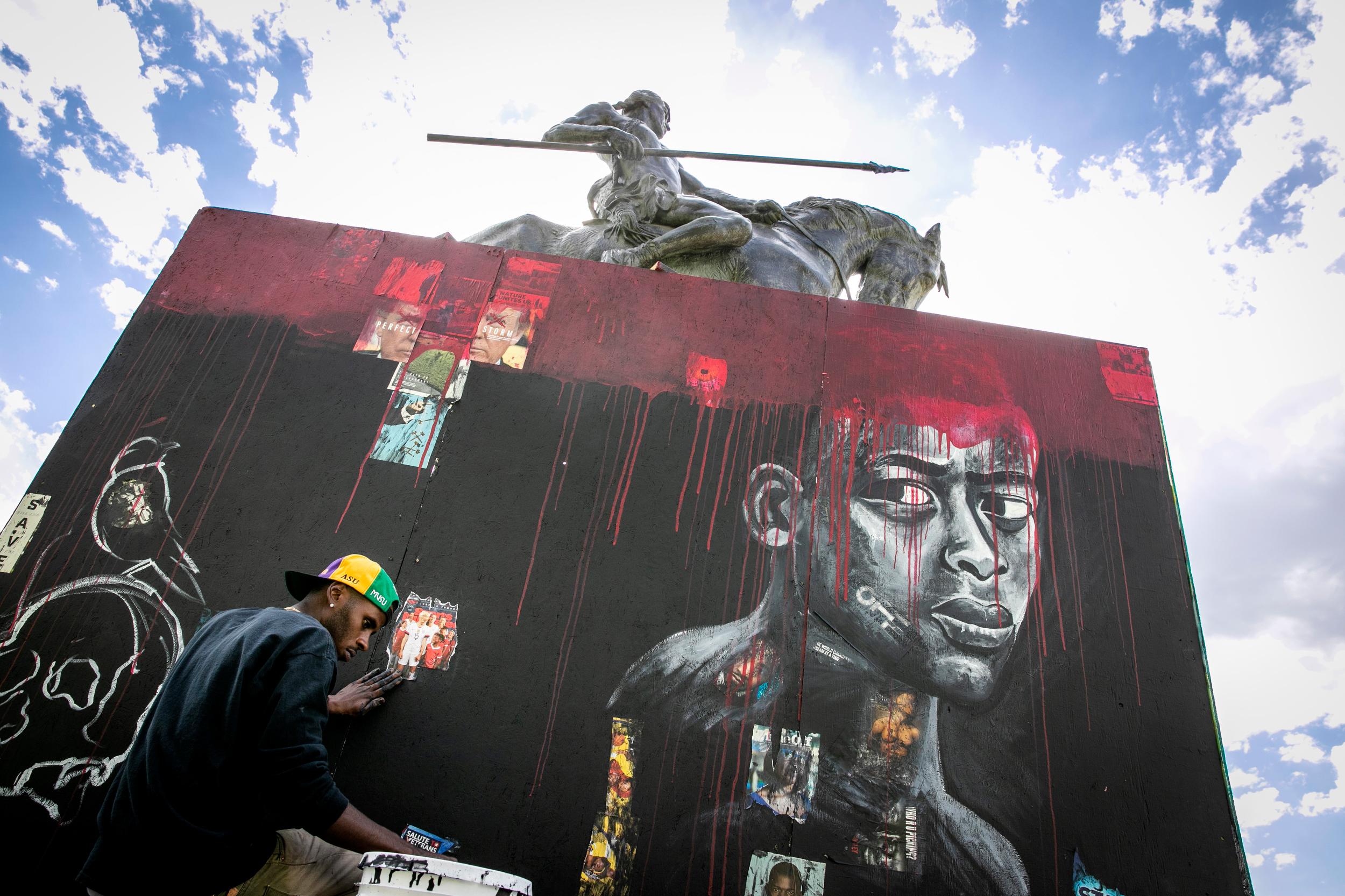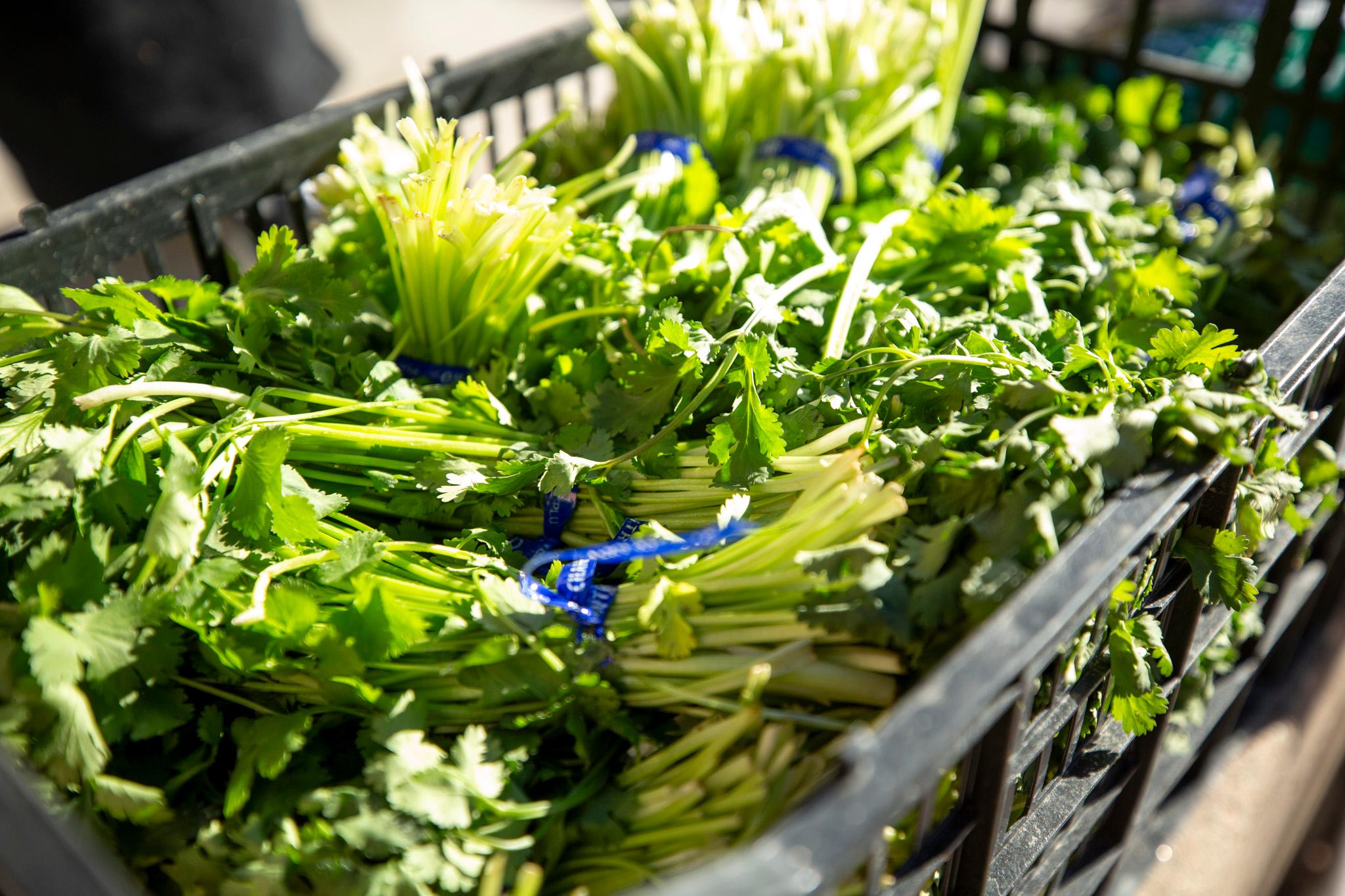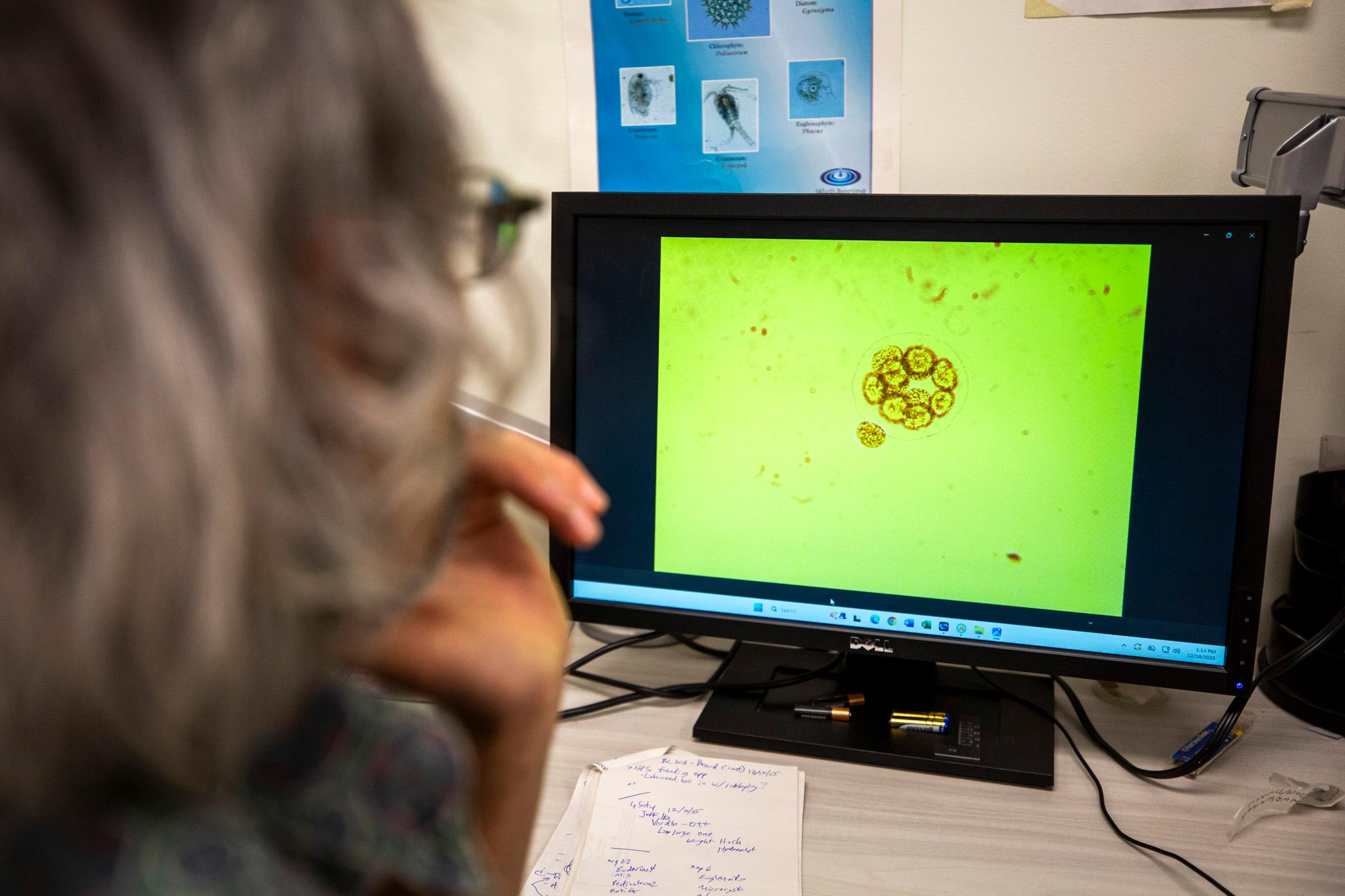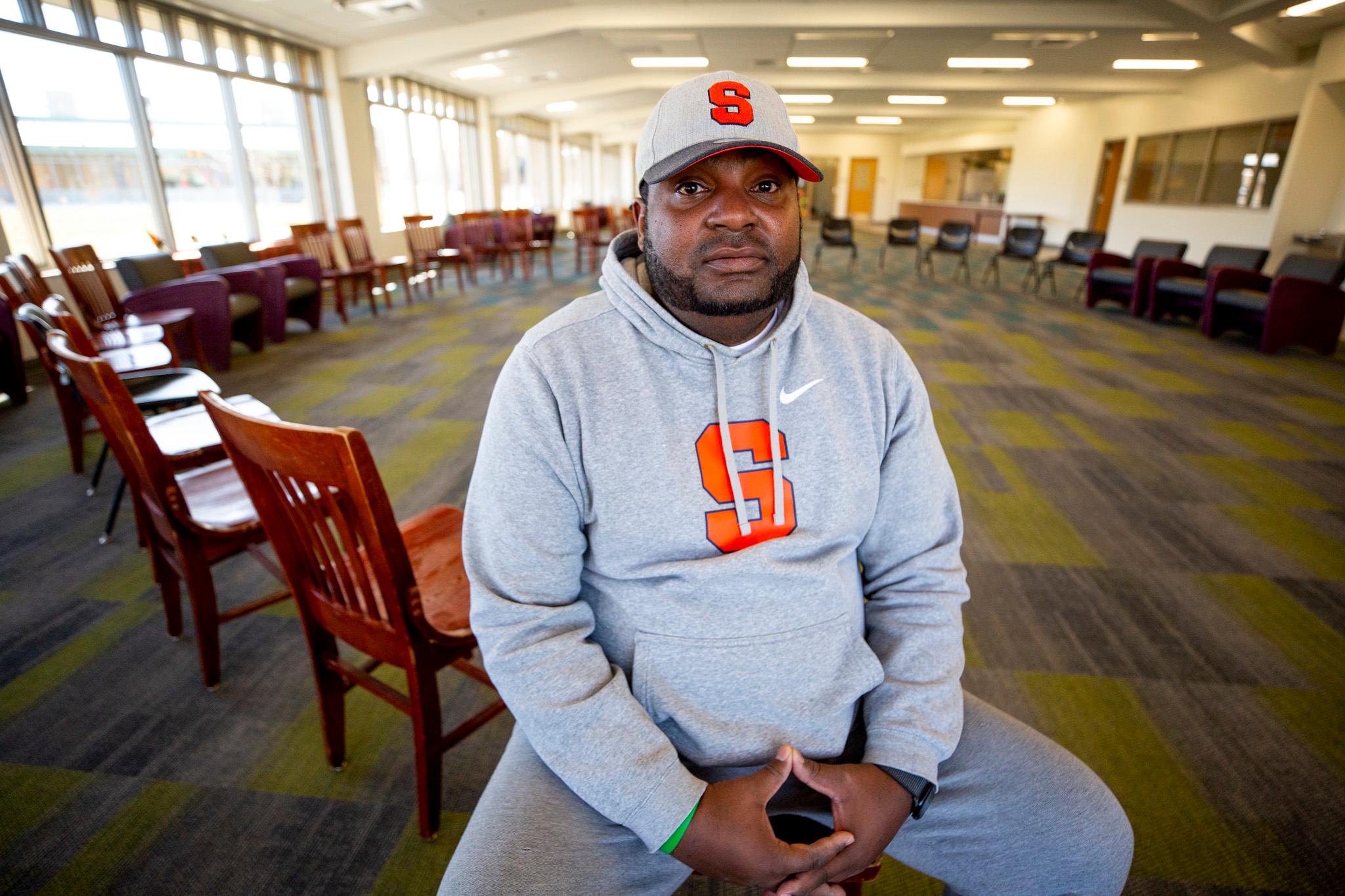On Friday afternoon, in the shadow of the new Ramble Hotel, a temple to Black love was being built: a two-story, three-dimensional wooden structure that next week will be covered in murals painted by ten Black artists.
The structure will be the site of the Black Love Mural Festival installation at this year's CRUSH Walls festival. Robert Gray, the creative director of Rob The Art Museum and co-founder of BLMF, calls the structure a "mural temple." It's a large installation, one that will stand out even at CRUSH, which is normally a 2-D world.
Next week during the festival, each of the structure's walls will be painted with a different mural celebrating Black love.
Gray is excited to give so many emerging Black artists the chance to paint at CRUSH.
"For every artist in Colorado, it's their dream to be a part of CRUSH," he said. "And it makes me feel good to make people's dreams come true. It's a highlight of my career."
The CRUSH Walls festival has been known throughout Colorado as an event that empowers artists and promotes community engagement. In recent years, its artist roster has become more diverse, featuring more women and nonbinary artists. Moe Gram, one of the BLMF's contributors, said these changes are important.
"There are a lot of dope Black artists. There are a lot of dope female artists. There's a lot of super, super badass transgender and nonbinary artists," Gram said. "And the proportions of artists involved should be reflective of the true demographics of creatives and artists in the city."
This year, that push to reflect diversity had an added level of urgency.
The artist selection process for CRUSH coincided with the civil rights movement this summer. Tracy Weil, the executive director and co-founder of RiNo Art District, said the curatorial committee worked to ensure a strong presence of BIPOC artists in CRUSH.
"We want to make sure that people that are in the community are represented," Weil said. He added the committee regularly does community outreach to make sure BIPOC artists apply.
Weil also said the festival coordinators thought about giving this year's CRUSH a "Black Lives Matter" theme, but ultimately decided they didn't want to dictate what artists were allowed to create, or censor their work in any way. Instead, they thought of other ways to engage with the current moment.
They brought in the Blackout Crew -- a group of Black artists from all over the country, including Detour, Hiero Veiga, Bakpak Durden, Sydney G James, Max Sansing and Kayla Mahaffey -- to collaborate on a mural that would celebrate Black culture. CRUSH is also collaborating with Redline on a panel called "Representation Matters: If Walls Could Talk," which will be led by artists like UC Sepia, Jodie Herrera, Hiero Veiga, Thomas Evans, DINKC, Alicia Cardenas and Casey Kawaguchi.
Gray said it's particularly important to include Black artists in an event like CRUSH that takes place in Five Points, a neighborhood with a fraught racial history marked by redlining and gentrification.
Five Points, which has earned a designation as a cultural historic district for its importance in African-American history, was once known as the Harlem of the West for its lively jazz clubs and bustling Black-owned businesses. Now, after decades of gentrification, development and rebranding in Five Points, the neighborhood's population is about 10% Black.
Despite the festival's outreach and intentions, when the initial CRUSH list came out, weeks before BLMF got involved, Gray was disappointed in the number of Black artists included. He worried that without significant Black representation, the festival would be whitewashed -- and that, by extension, the Five Points neighborhood would be further whitewashed, too.
"It's super important to have representation in Five Points, because there are literally advertisements that say it's a historical Black neighborhood," he said. "But there's really nothing historically Black about it, because it's been gentrified so much."
Gray said Black artists are often considered as a second or third option in art projects, or else included as a "token Black person."
"There's a saying that they have in the art world: White walls, white wine, white men. And that's really what the art community is still," Gray said.
"No matter what gallery, or whatever alley you walk down, we're always a minority. And that's not right, especially in neighborhoods that are ours."
BLMF emerged as a way to create artistic opportunities within Denver's Black community, rather than relying on predominantly white venues and spaces for opportunities.
Last June, Gray and Annie Phillips, a frequent collaborator and the owner of IRL Art, put together the first ever Black Love Mural Festival as a way to promote the message of the Black Lives Matter movement. In just a couple of weeks, they fundraised for the event and enlisted a group of local Black artists to decorate Civic Center Park with temporary mural installations responding to the moment. It was a public celebration of Black love through art.
Phillips said it was also the first time many of those artists had ever been invited to paint a mural.
"It's all about trying to provide opportunities for artists that have been historically left out," she said. "When you take a deeper look at it, there's unfair advantages and privilege seeped into the art world. So our big mission is just to kind of tilt those scales."
Gram was one of the artists invited to paint at BLMF. She's been working in Denver's mural scene for a while now, but she said it was exciting to see other Black artists get the opportunity to paint a mural for the first time.
"We're talking about getting an invitation to the mural club. You know, somebody saying, 'I believe in your talent as a creative. I believe you are capable of painting on this big wall,'" she said. "It's these individuals who are intentionally going out of their way to change the norm that makes the difference."
Gram says she had a hard time breaking into that art world as a Black-passing, mixed-race woman.
"I haven't always had access to the club," she said. "If you are any marginalized person who does not come from a place of privilege, you don't always have the ability to go to every single art opening, shake hands with all the right people and do the hangout on a random Thursday in the middle of the afternoon. Not everybody has the privilege to commit to their art career to the same level as other people."
She also says that in the art world, there are sometimes "gatekeepers"- established artists who determine who's allowed into that world.
"You have to be in the right places, at the right times, with the right people," she said. "And slowly that's changing, and these applications are becoming more accessible. But for a long time, it was a very exclusive club."
The first Black Love Mural Festival opened the door for broader participation in CRUSH Walls. Back in June, Gray and Phillips invited Lulu Clair, the Events Director at Two Parts, the company that helps organize and market CRUSH, to tour the BLMF murals.
"I was just blown away by how they were able to pull it together so quickly and with such a small team," Clair said. "I think that it's really a matter of heart that they were able to do so much in such a small amount of time. "
She was also struck by how it seemed they had done it entirely for themselves and for their community, not for press or money. She spoke to Gray and Phillips about the possibility of having a BLMF installation at CRUSH.
"It was like, 'Well, hey, if they're working so hard to create these opportunities for other people, why don't we try and create an opportunity for them as part of this festival?'"
She also felt that it would be a mutually beneficial endeavor, that bringing a group like BLMF into CRUSH fit in with the festival's commitment to diversity and community engagement.
"It's kind of bringing this common ground of what old Five Points was into what's RiNo now," Clair said. "The developers and the business owners and the building owners over there have this opportunity to put their money where their mouth is. If they truly want to be inclusive of this community that has been there forever, here's an opportunity."
But that partnership almost didn't happen.
Clair put together a proposal to pitch to the RiNo Art District, which is in charge of curating and funding the event. By then, CRUSH had already filtered through the 728 applications and locked down their artist list. They'd also allocated most of their funds.
CRUSH funding typically comes from a number of sources. The district has a budget sourced from a RiNo BID property tax fund. Local businesses and media companies also sponsor walls, sometimes partnering with artists to liven up their buildings' exteriors. The money raised goes to cover the festival expenses, the cost of equipment and supplies, and artist stipends.
This year was different. The CRUSH committee had to budget for COVID-19 safety measures like blockades and hand sanitizing stations. And paid sponsorships were difficult to secure now that many local businesses are suffering because of the pandemic.
So Clair put together a proposal she felt certain the CRUSH curatorial committee couldn't deny: BLMF would do their own fundraising, and build the walls themselves. In exchange, CRUSH would provide the space and opportunity.
The committee enthusiastically agreed. They provided BLMF with the location -- the Ramble Hotel parking lot -- as well as an event to attract guests. It's also a spot that's guaranteed a lot of built-in traffic, because it's set up near the festival's pop-up bar.
But then, once again, Gray and Phillips were faced with fundraising a major project in less than a month. On August 30, two weeks before the festival, Gray set up a GoFundMe page with a goal of raising $10,000. Gray said that the initial expenses of building the structure -- of screws, drivers, hammers, nails and wood, and the cost of paying the builders and laborers -- comes to about $3,000. He said he paid that out of pocket.
Then, there's the cost of the paint supplies: paints, tips and nozzles, primer, enamel paint. Gram, who's working on one of the installation's murals, said that for just the materials alone, a single wall can cost anywhere from $250-$700, depending on its size. This structure, Gray said, will have six walls.
And then there's the cost of labor.
"Most of these artists are out there for an entire week, putting in like 8-10 hour shifts on their walls," Gram said. "If you do the math, a lot of artists are not even necessarily getting paid for their time. It's truly a labor of love."
The other $5,000 in the GoFundMe target was designated to pay the artists $500 each. But now, just days before the festival, the GoFundMe has raised only $500, despite a marketing boost from CRUSH and Two Parts. The ten artists enlisted to paint the BLMF mural structure plan to do it for free.
Phillips says it's frustrating to have to fundraise on such a quick timeline. And it's frustrating, too, that this project hasn't had the same degree of support as did the original Black Love Mural Festival back in June.
"It's really discouraging and disenfranchising for minority groups to be engaged with on one project, and then for those people to go away," she said. "It's really, really important for us to continue this work, to really build healthy relationships and healthy outlets to show communities that they matter always, and not just when it's trending."
Gray says he understands that people might be hesitant to spend money now, during a pandemic and related economic crisis.
"We're just doing the best we can, and any help from the community is greatly appreciated," he said. "We're gonna make it happen. We make a lot of magic happen in a short amount of time."
Even without funding, the event is rolling on.
Gram says she's working on a mural with artist Jameson "Bannedesign" LaDopa. Their piece will celebrate Black men by portraying figures and characters they admire in a soft, loving light. The idea is to challenge the way Black men have often been portrayed in pop culture and media as thugs or criminals, and to celebrate their sensitive, loving natures.
Gram says she's excited to see things changing gradually in Denver's art scene.
"It's about time," she said. "It's the first year to have something like Black Love Mural Festival come through. And it feels weird to say this, but I think people will start to trust that Black people are capable of doing things."
She said that simply having Black artists out there creating might act as an affirmation of sorts, something that could solidify the idea that they belong in the art world.
"I think it's just an opportunity to confirm that this should have just been a regular part of the way that we did things the whole entire time."
BLMF will be at CRUSH Walls on September 14-20. They're also hosting a BLMF after-party with live music at Civic Center Park on September 26.













